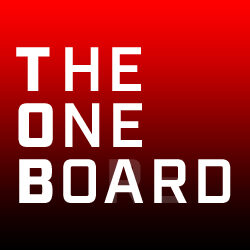This installment of The One Board originally appeared in Bowlers Journal International, April, 2019
I watch a lot of bowling. Aside from the common-sense observations everyone sees, like an asymmetric ball with a pin-up layout and no weight hole coming off the back of the medium-length high-volume pattern with fried fronts differently from 8 than from 12 when the temperature was between 40 and 50 degrees last night with a 20% chance of rain and a forecasted thunderstorm 10 days from now 30 miles northwest of the venue, I also perceive less obvious developments. This month, we’ll explore three of them.
The most exciting score in bowling is 177.
There is very little suspense on every bowling shot, specifically at the professional level. That is, the expected outcomes of all shots are so much more likely than other outcomes, it’s hard to surprise anyone.
Stats show bowlers strike on their first shots most of the time. They make their single pins almost all the time and they rarely convert difficult splits. When fans see what they expect, there’s no surprise and thus, no overwhelming outburst of cheering.
Thus, the most exciting frame in bowling requires a bowler to roll a great shot that results in a 7-10 split, captivating fan interest even if dubiously. Next, the bowler must create more intrigue by picking up the 7-10 split, sending everyone into frenzied applause. Therefore, the most exciting score in bowling is 177 (10 7-10 conversions followed by a lily on the fill ball). One could also argue for a 179 with a stone 8 on the fill or possibly for a 178 with yet another 7-10 split, but in this scenario, a lily seems like the absolute best way to close that game.
Rolling 177s won’t help bowlers make any cuts, but if anyone puts together the game described above, it will be the most exciting and most famous game of bowling in history.
The least exciting score in bowling is 178.
The most boring result on a first shot is eight. No splits; just standard 6-10s. Also, an 8-count is innocuous, so you don’t risk adding any exhilaration by rolling so many eights in a row. Combine 10 straight 8-counts with 10 consecutive easy spares, then finish with another 6-10 leave on the fill, and you’re at 178. You just rolled the most boring game of all time, but at least you beat the guy who just rolled the most famous game of all time. He’ll be remembered, but you have the larger paycheck.
Practice is more entertaining than qualifying.
There are a lot of similarities between an event’s official practice session (held the day before competition begins) and its qualifying rounds. All the players are there, bowling is happening throughout the entire bowling center, shots are rolled and lessons are learned.
During practice, there’s no score, which should immediately be the biggest argument against this observation. However, with the music playing during practice, there’s an environment of fun for the fans. The players are more interactive with each other and with the fans, who are naturally encouraged to create a healthy murmur amongst themselves rather than be filled with the overwhelming dread that any movement whatsoever will kill the entire sport. The entire mood in the building, although practice is an important part of a player’s tournament, is much lighter.
The pace is quick. Nobody yields to anybody. Someone is always bowling and fans’ favorite players roll seemingly limitless shots. Everything is moving, everything is exciting, everything is fun.
In qualifying, there’s no music. There’s yielding in every direction. The mood is anxious. There are scores, which is nice from a sporting perspective, but fans are scared to look at the scoring monitors for fear of raising their gaze too rapidly while someone was going through his pre-shot routine six lanes away.
After two hours of practice, an enthralled spectator wanting more might say, “That’s it?” After two hours of qualifying, a bewildered spectator might say, “What game are they in? How many more?”
Three more, sir. Three more. And don’t forget to stick around for B squad.

